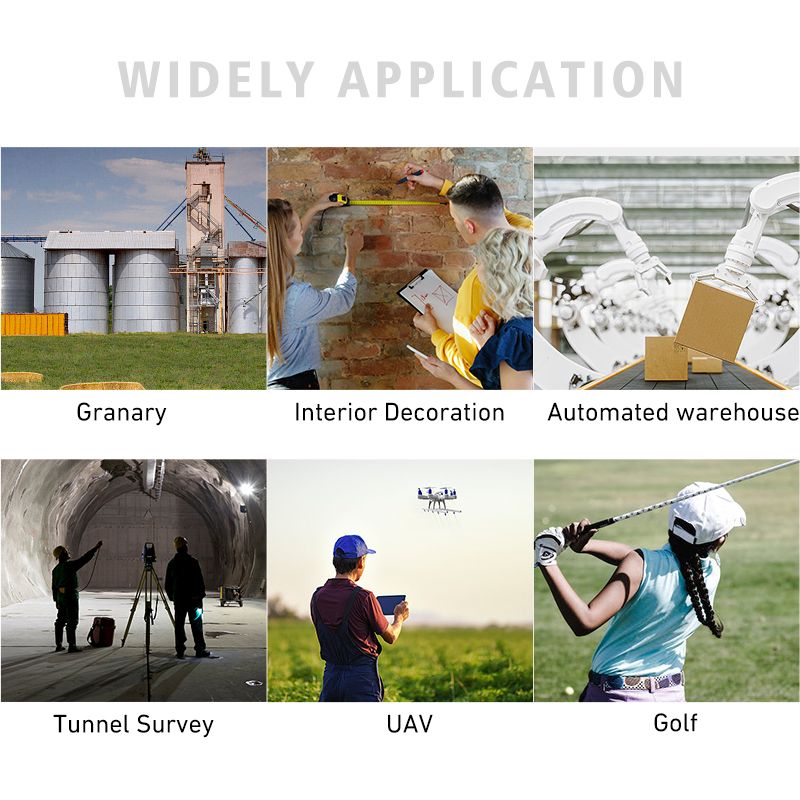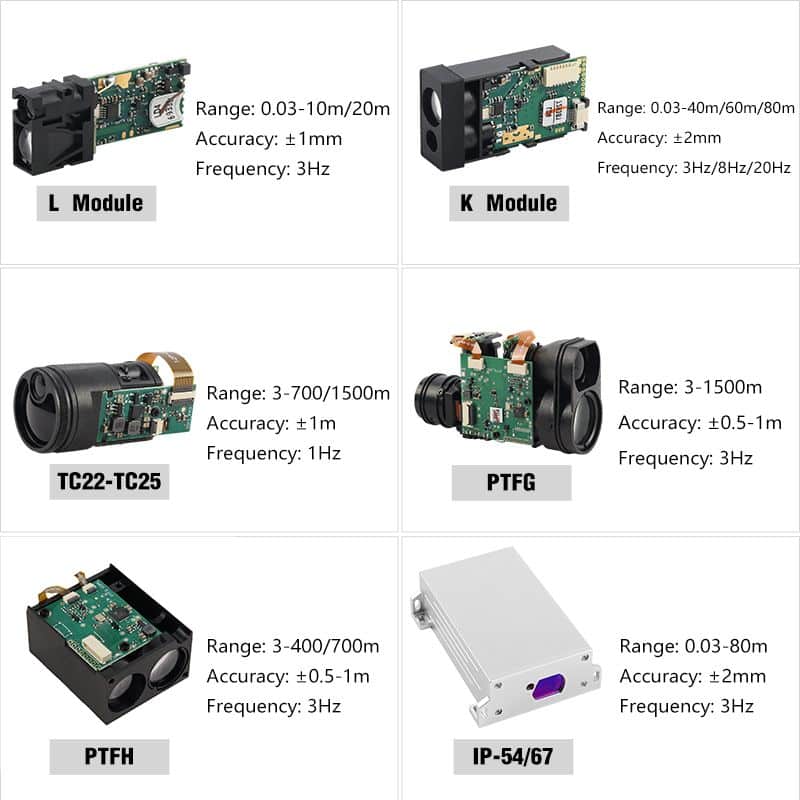The Synergy Between Microcontrollers and Laser Sensors: Achieving Precise Measurement and Smart Control
As the Internet of Things (IoT) and smart technologies continue to evolve, the demand for accurate mesafe ölçümü and real-time data processing has surged. Lazer mesafe sensörleri, renowned for their precision and versatility, have become integral to automation and robotics systems. Complementing these sensors are microcontrollers (MCUs), which serve as the brains behind these systems, orchestrating sensor control, data processing, and intelligent decision-making.
This article explores the powerful synergy between microcontroller modules and lazer mesafesi sensors, showcasing their transformative impact on industries such as robotics, automation, and IoT.
The Role of Microcontrollers: Core of Intelligent Control and Data Processing
A microcontroller is a compact integrated system comprising a processor, memoryve input/output interfaces. It functions as the central unit in embedded systems, performing critical tasks such as:
- Controlling the Sensor: Sending signals to initiate the laser sensor’s measurement cycle.
- Data Collection and Processing: Reading and converting sensor data into actionable information, such as distance values or anomaly tespit.
- Communication and Output Control: Interfacing with external systems (e.g., displays, servers, or control units) via protocols like UART, I2Cveya SPI.
- Decision Making: Processing collected data to trigger intelligent actions, such as adjusting motors, activating alarms, or displaying results.
Araştırma İçgörüsü: Göre IEEE Endüstriyel Elektronik İşlemleri (Kaynak), microcontrollers play a critical role in real-time data acquisition and processing, enabling highly responsive embedded systems in industrial automation and robotics.
In essence, microcontrollers act as operational hubs, orchestrating sensor functionality, interpreting data, and driving smart responses.
Connecting Laser Distance Sensors with Microcontrollers
Lazer mesafe sensörleri measure distance by emitting a laser beam and calculating the time it takes for the beam to return after hitting an object (Uçuş Süresi, ToF). To integrate seamlessly with microcontrollers, these sensors offer several communication interfaces:
- UART (Serial Communication): A common protocol for data transfer between sensors and microcontrollers.
- I2C or SPI: Ideal for faster data transfer or handling multiple sensors in complex systems.
- Analog Output: Some sensors provide analog voltage outputs that microcontrollers can process using ADCs (Analog-to-Digital Converters).
Araştırma İçgörüsü: Dergide yayınlanan bir çalışma MDPI Sensörleri highlights that selecting the appropriate communication protocol significantly impacts sensor integration efficiency and overall system responsiveness.
These interfaces ensure efficient data exchange, enabling real-time processing and responsive control actions.
Workflow Example: How Microcontrollers and Laser Sensors Collaborate
To illustrate the interaction between microcontrollers and laser distance sensors, consider the following workflow:
- Başlatma: The microcontroller configures the sensor’s parameters, such as measurement mode and output format.
- Measurement: The microcontroller triggers the laser sensor to emit a beam, receive the reflected signal, and calculate the distance.
- Veri Toplama: The sensor transmits measured data to the microcontroller using the chosen communication protocol.
- Veri İşleme: The microcontroller refines the raw data, filtering noise and converting it into usable information.
- Kontrol Çıkışı: Based on processed data, the microcontroller triggers actions like motor adjustments, result displays, or remote data transmissions.
Araştırma İçgörüsü: In a case study published in SpringerLink – Intelligent Sensors (Kaynak), researchers demonstrated how microcontroller-controlled lazer sensörleri achieved superior accuracy and response time in real-time obstacle detection systems for autonomous vehicles.
This workflow highlights the microcontroller’s pivotal role in orchestrating measurement processes and driving intelligent system responses.
Common Applications: Combining Microcontrollers and Laser Sensors
1. Automation Systems
In industrial settings, laser sensors measure distances, enabling microcontrollers to control robotic arms, conveyor belts, or other machinery with precision.
- Destekleyici Kanıtlar: Research published in IEEE Sensörler Dergisi (Kaynak) shows that microcontroller-laser sensor integration reduces errors in manufacturing processes by up to 30%.
2. Robotics Navigation
Laser distance sensors, often functioning as LiDAR, help robots map environments. Microcontrollers process this data for path planning and obstacle avoidance, enabling autonomous navigation.
- Destekleyici Kanıtlar: A study from MDPI Robotics highlights how real-time data from laser sensors processed by microcontrollers significantly improves navigation accuracy in robotics.
3. Smart Home Systems
In smart homes, microcontrollers paired with laser sensors facilitate automated lighting adjustments, occupancy monitoring, and interactive device control.
4. Security and Monitoring
Laser sensors detect movements or intrusions, while microcontrollers process the data and trigger alarms or notifications for enhanced security.
- Destekleyici Kanıtlar: Research published in Sensors and Actuators A: Physical (Kaynak) demonstrates the reliability of microcontroller-laser sensor systems in perimeter security applications.
5. Object Classification and Sorting
In manufacturing and loji̇sti̇k, microcontrollers use laser sensor data to classify and sort objects based on size, shape, or position, improving efficiency.
 analog çıkışlı mesafe sensörleri
analog çıkışlı mesafe sensörleri
Hardware Connections and Interface Selection
Proper hardware connections are crucial for seamless integration of laser distance sensors with microcontrollers. Key considerations include:
- Güç Kaynağı: Stable power sources for both components.
- Data Lines: Connecting sensor output pins (e.g., TX/RX, SCL/SDA) to microcontroller input pins.
- Communication Protocol: Selecting the most suitable interface (UART, I2C, SPI, or analog input**) based on application requirements.
Araştırma İçgörüsü: In a study published in Sensörler Dergisi , researchers concluded that careful interface selection minimizes data latency and improves system responsiveness.
Lazer Mesafe Sensörü Çözümlerimizi Keşfedin
 mesafe sensörü analog output
mesafe sensörü analog output
The synergy between microcontrollers and laser distance sensors is pivotal in achieving precise measurements and smart control across diverse industries. Microcontrollers not only manage sensor operations but also process data to drive intelligent responses, making systems more adaptive and efficient.
From industrial automation to robotics navigation and smart home solutions, the integration of these technologies is shaping the future of intelligent devices. Supported by ongoing research and technological advancements, this synergy will continue driving innovation, efficiency, and precision across a wide range of applications.